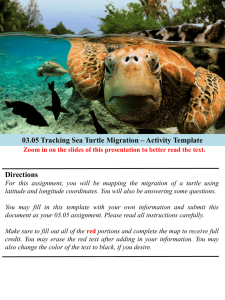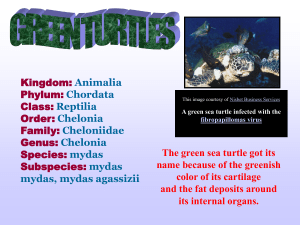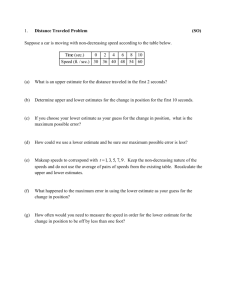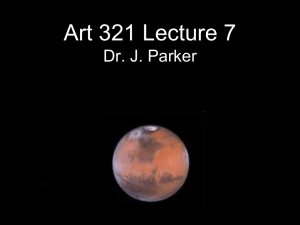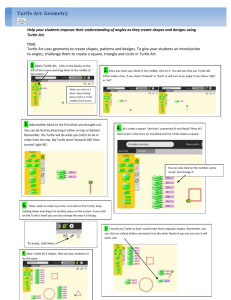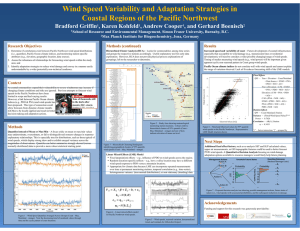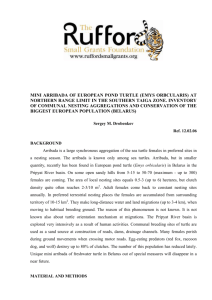Satellite tracking - Proceedings of the Royal Society B
advertisement
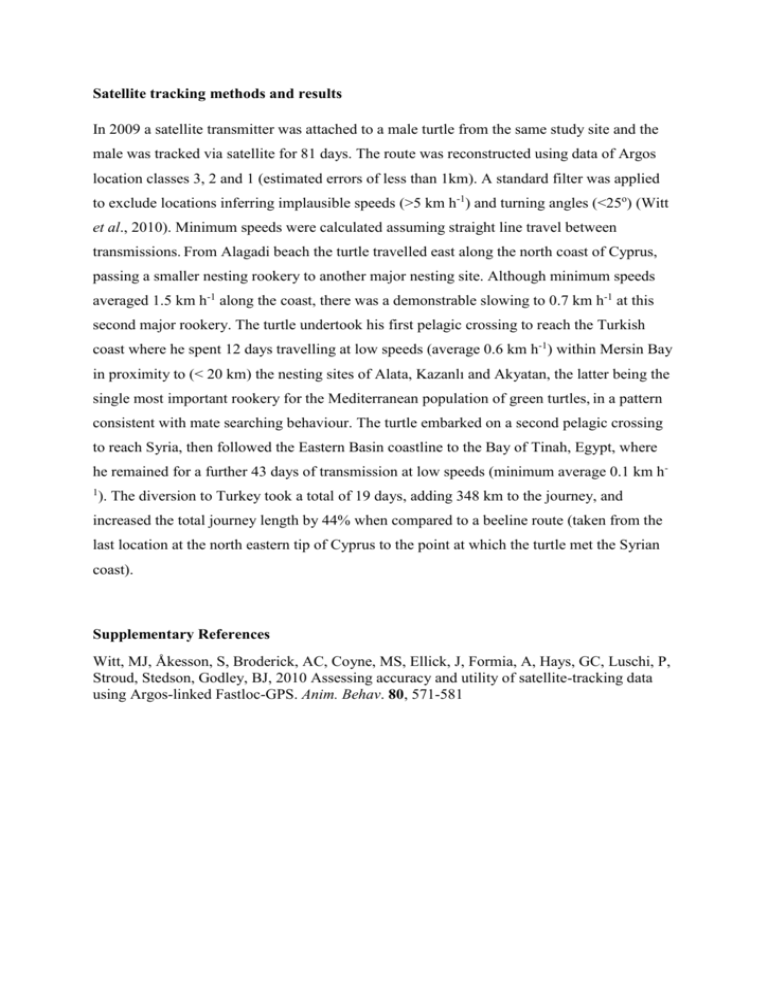
Satellite tracking methods and results In 2009 a satellite transmitter was attached to a male turtle from the same study site and the male was tracked via satellite for 81 days. The route was reconstructed using data of Argos location classes 3, 2 and 1 (estimated errors of less than 1km). A standard filter was applied to exclude locations inferring implausible speeds (>5 km h-1) and turning angles (<25o) (Witt et al., 2010). Minimum speeds were calculated assuming straight line travel between transmissions. From Alagadi beach the turtle travelled east along the north coast of Cyprus, passing a smaller nesting rookery to another major nesting site. Although minimum speeds averaged 1.5 km h-1 along the coast, there was a demonstrable slowing to 0.7 km h-1 at this second major rookery. The turtle undertook his first pelagic crossing to reach the Turkish coast where he spent 12 days travelling at low speeds (average 0.6 km h-1) within Mersin Bay in proximity to (< 20 km) the nesting sites of Alata, Kazanlı and Akyatan, the latter being the single most important rookery for the Mediterranean population of green turtles, in a pattern consistent with mate searching behaviour. The turtle embarked on a second pelagic crossing to reach Syria, then followed the Eastern Basin coastline to the Bay of Tinah, Egypt, where he remained for a further 43 days of transmission at low speeds (minimum average 0.1 km h1 ). The diversion to Turkey took a total of 19 days, adding 348 km to the journey, and increased the total journey length by 44% when compared to a beeline route (taken from the last location at the north eastern tip of Cyprus to the point at which the turtle met the Syrian coast). Supplementary References Witt, MJ, Åkesson, S, Broderick, AC, Coyne, MS, Ellick, J, Formia, A, Hays, GC, Luschi, P, Stroud, Stedson, Godley, BJ, 2010 Assessing accuracy and utility of satellite-tracking data using Argos-linked Fastloc-GPS. Anim. Behav. 80, 571-581



